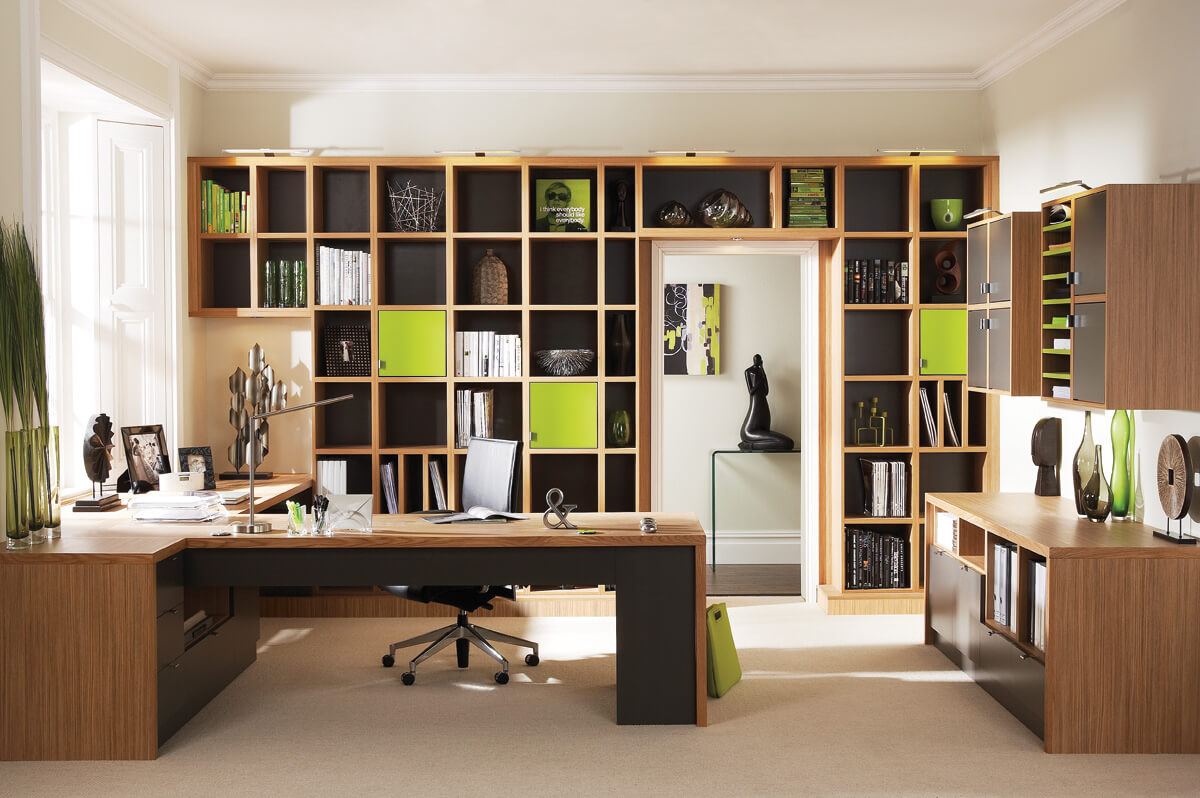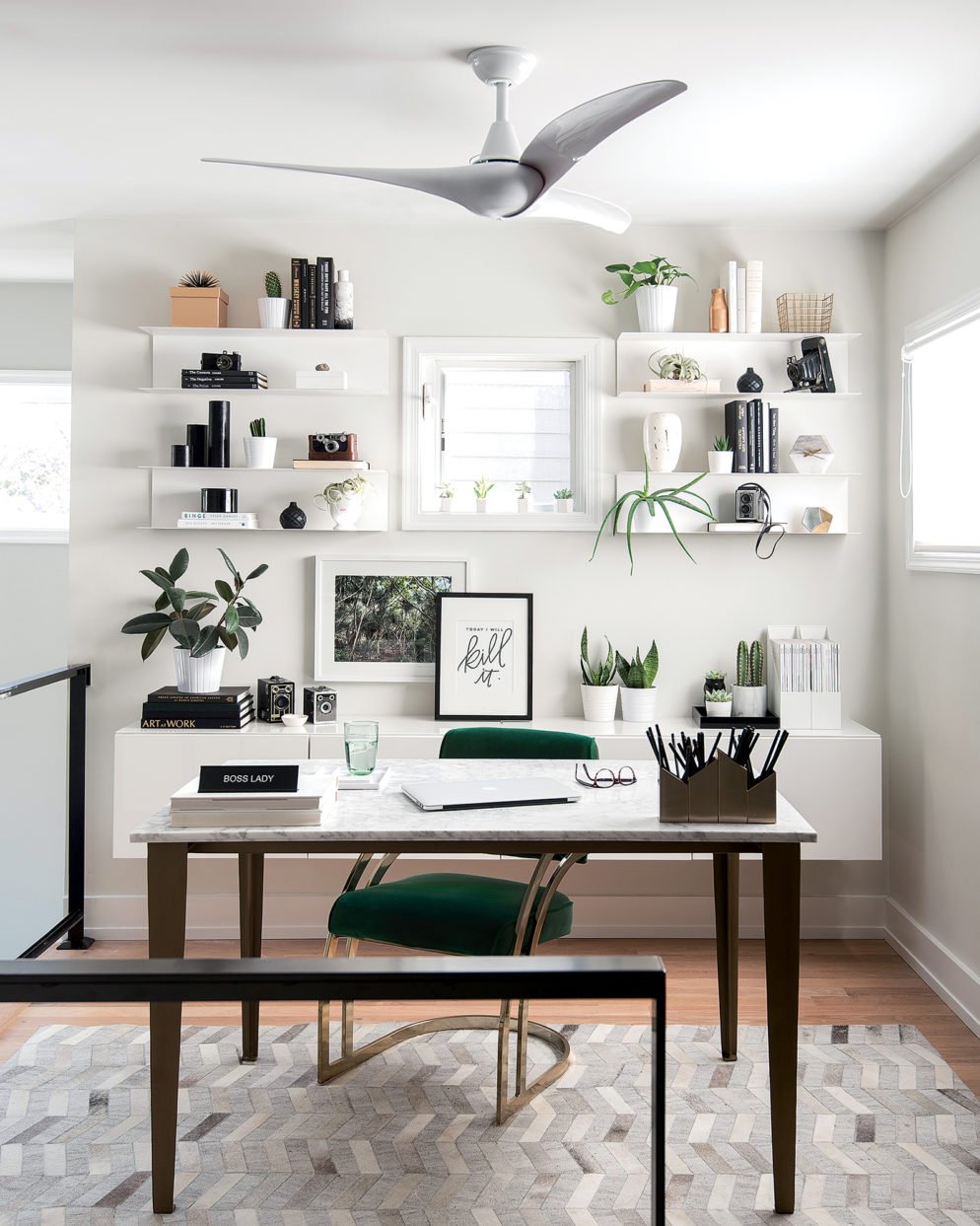Over recent months our lives have changed dramatically. In order to follow social distancing guidance, millions of people started working from home. Many faced the challenge of adapting their private home space into an office. According to AA Financial Services, the pandemic has prompted 1 in 12 households to invest significant amounts of money into a new home office.
Our last article provided our team’s top tips on working from home. In this one, we will have a closer look at creating a home office that will both inspire you and support your productivity. Many people will be working from home for the foreseeable future and therefore, a dedicated home office is now vital!
When creating an office, your options depend on the circumstances of your existing house. If you don’t have a spare room that can be easily re-arranged into an office space, then an extension or renovation of a garden room or shed may be an option. This helps you separate your private space from the working area, which not only is beneficial for your work-life balance; but it can also promote increased productivity at work.
If you want to use your outbuilding all year round you need to make sure it will be well-insulated and have a heat source. Also, check to see if you need planning permission or whether the conversion is covered under permitted development.
If you prefer to create an office in a spare room of your house/flat, you can entirely focus on arranging your space in a way that boosts your productivity and minimises distractions. It sounds good, but how to achieve it?

CONSIDER THE LAYOUT
The first thing you should do is write down all the things you like and don’t like about your work office (if you can even remember it). Then create a list of the elements that you can and want to implement in your own space. The fancy coffee machine will surely boost your productivity, but it may be difficult to justify such an expenditure.
Try to imagine how you will use the space and consider the best location for your desk, storage and printer. Do you like to spread items out around the room to encourage regular movement breaks, or do you prefer to have everything you need within arm's reach? Arrange the space to suit you and your preferences.
How much storage do you need? If you work from home on a daily basis, then you will need to consider additional storage. For example, if you use devices like printers, scanners, document shredders or hold lots of documents, you can incorporate sliding doors to your shelving unit. This effectively hides away any mess and reduces clutter.
Are you easily distracted when your family is at home? Then consider setting up a coffee table with an electric kettle to minimise the number of times you need to leave the room.
Do you make regular video calls? If so, it is important to consider your backdrop – this could be a plain wall or a sophisticated shelving area.

THE IMPORTANCE OF LIGHTING IN YOUR HOME OFFICE
Lighting is crucial for both your productivity and well-being. Be sure to consider the availability of natural light in your room and position your desk accordingly.
If you don’t plan to use blinds, try to arrange your desk so that you are facing the window, preventing glare or reflection from your screen.
Artificial light should also be considered, especially if you tend to work in to the late evenings. It is vital to have good quality lighting to prevent the risk of straining your eyes.
When positioning electric lighting, make sure the fittings are situated so that you are not working in your own shadow. An excellent solution for this is to install several low-glare LED downlights to cross-light the workspace.
INTERNET
Another obvious but crucially important point to consider is your broadband signal. It may be challenging to sustain a reliable wireless signal in rooms that are superated from the main home where broadband hubs tend to be located.
Therefore it may be worth installing a wired LAN socket to ensure that you have access to a wired broadband connection.

CHOOSE YOUR DESIGN STYLE AND FURNITURE
The most enjoyable element of creating a home office is deciding on its visual style and choosing furniture that can be equally inspiring and comfortable.
The two most important pieces of furniture for working from home are desk and chair, and you shouldn’t try to save money on those products.
There is always a dilemma with choosing a desk, especially if the size of your home office is not very impressive. If you decide to have a big desk where you can keep two screens, speakers, and lots of documents you sacrifice the space in your room.
We would recommend you consider investing in a standing desk which allows you to mix your working position up and relieve your back. Some desks have wire channels to keep all the cables out of the way.
Obviously, you want a chair that fits the rest of your design choices. But remember that (unless you have a sitting desk) you use it around 7-10 hours a day which. Then a good quality chair that supports your spine is a must. There are many choices available that will allow you to find a chair that suits both your design and is comfortable.
You can even save money on buying a high-quality chair as there are many companies specialising in selling refurbished top class models for less than half of the original price.

If you are looking for ideas on how to decorate your home office then have a look at homebuilding portals such as Homebuilding & Renovating or Build It for inspiration! However, the biggest treasure trove of design inspiration is Pinterest.
Below we picked our top 10 home office designs from Pinterest. You can see more of them in the ACA’s Pinterest board.
Tagged With: Construction Professionals, COVID-19, Home Design, Interior Design, productivity, Self Build, Self Build research



